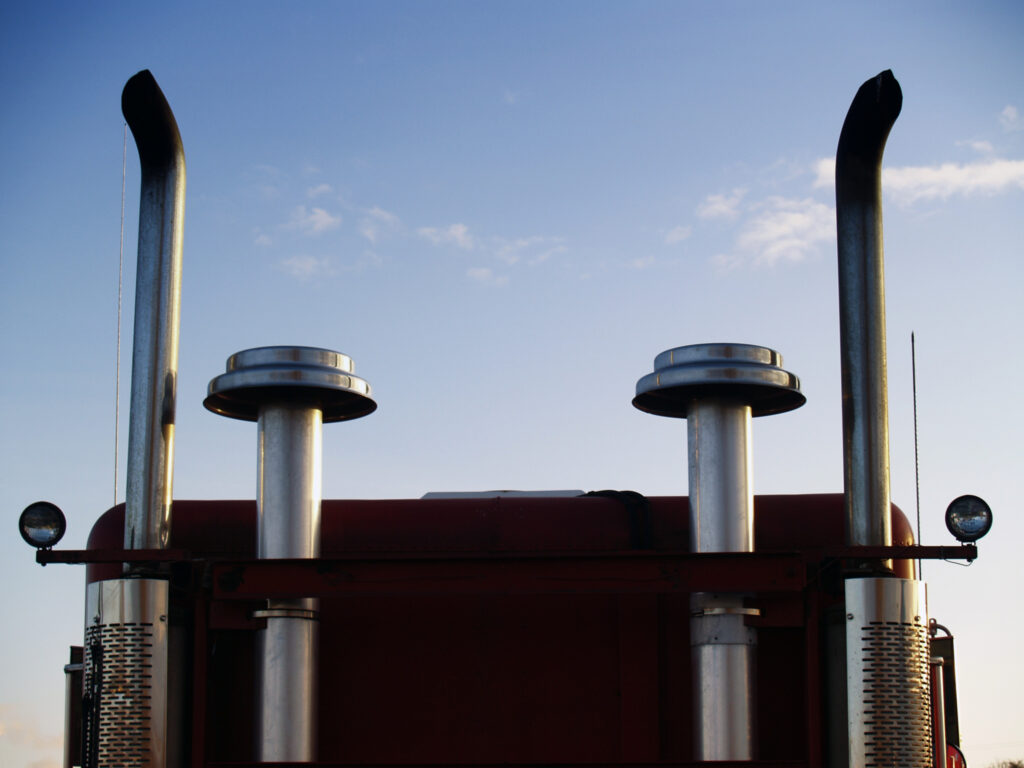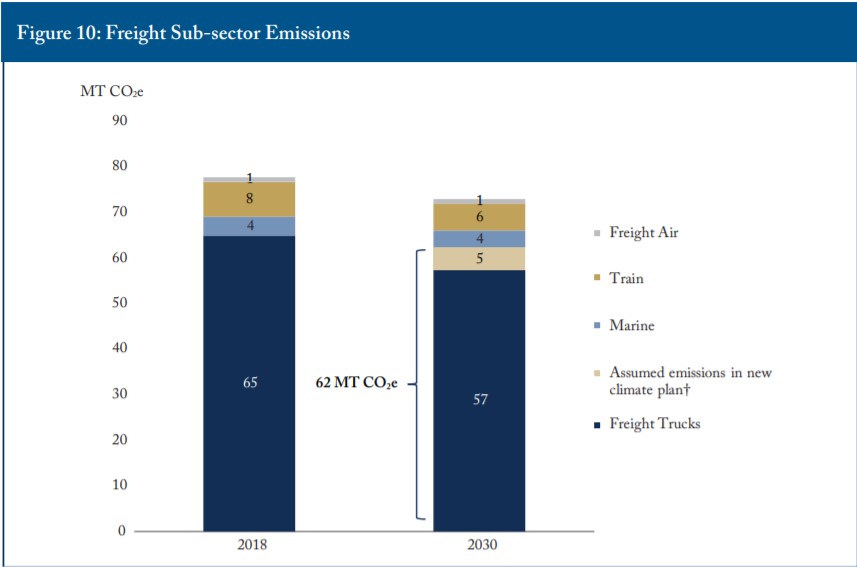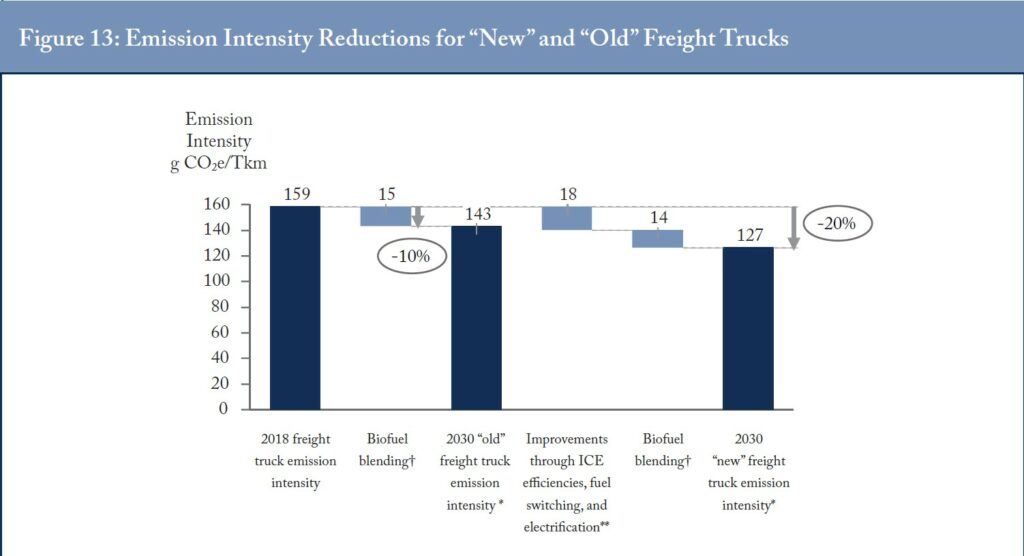Trucks must cut 18% emissions to meet Ottawa target: report
Achieving Ottawa’s emissions targets would require a roughly 18% reduction in the average emission intensity of freight trucks by 2030, says a new report from the C.D. Howe Institute.
Such a reduction will require either improvements in vehicle efficiency, electrification or adaptation of hydrogen fuel cell technology for freight transport, as well as biofuel blending.

A complete transformation of Canada’s passenger vehicle market – with 70 – 75% of sales being of zero-emission vehicles (ZEVs) by 2030 – is required, says the report. This compares to the current 3.5% of sales being zero-emission vehicles in 2020.
In “Driving Ambitions: The Implications of Decarbonizing the Transportation Sector by 2030,” the authors examine the federal government’s December 2020 climate plan and calculate to achieve the projected reduction in greenhouse gas emissions (GHGs) from Canada’s transportation sector, approximately 7.7 million zero-emission passenger vehicles would need to be on the road in 2030 – equivalent to a 30% share of the total vehicle stock.
Environment and Climate Change Canada (ECCC) projects emissions from freight transportation to fall from 78 MT in 2018 to 73 MT in 2030 under the strengthened climate plan.
The largest portion of emissions in the freight sector come from freight trucks, which include vehicles from class 2B up to class 8.

Unlike emissions for passenger transport, emissions are projected to fall only minimally for freight transport. Emissions from freight trucks specifically are projected to fall from 65 MT in 2018 down to 62 MT in 2030. In 2018, there was 410 billion tonne-kilometres (Tkm) driven by freight trucks. ECCC projects this to increase to 478 billion Tkm by 2030.
Using ECCC’s projections for both emissions and tonne-kilometre tells us that the emission intensity for freight trucking must fall from 159 grams CO2e tonne-kilometre (g CO2e/Tkm) in 2018 down to 131 g CO2e/Tkm in 2030 – representing a decline in GHG emissions per Tkm of 18%.
Emission reductions can also be achieved through driving less, or mode-switching.
Electrification
Using ECCC’s projections for emissions and tonne-kilometres, approximately 14 MT will be avoided in 2030 through a combination of fuel blending, internal combustion engine (ICE) efficiency improvements, fuel switching, and electrification.
Approximately 7 MT is reduced by applying the fuel blending assumptions provided by ECCC where renewable diesel blending increases from 2.6% in 2018 to 12.8% in 2030 (on an energy basis rather than a volumetric basis).
The remaining 7 MT reduction will then have to come from a combination of more efficient ICE freight trucks, fuel switching, and electrification.
Freight trucks have a variety of ways in which emission intensity reductions can be achieved which involve either current or emerging technologies. Improvements can be made with existing technologies that improve aerodynamics, reduce wheel resistance, improve engine efficiency or decrease idling.

Large scale improvements, however, will likely require emerging technologies such as electric powertrains, hydrogen fuel cells, and autonomous trucking.
The federal government’s plan projects a reduction of 213 megatonnes (MT) of greenhouse gas emissions – or 30% of 2018 nationwide GHGs – by 2030. The plan projects GHGs from transportation to fall by 35 MT from 186 MT in 2018 to 151 MT by 2030.
“Understanding the practical implications of transportation emissions goals will support policymakers in considering the trade-offs involved in achieving those goals,” write the authors.
This report focuses on passenger and freight transportation, from cars to SUVs and trucks, which are the main sources of the sector’s emissions.
Have your say
This is a moderated forum. Comments will no longer be published unless they are accompanied by a first and last name and a verifiable email address. (Today's Trucking will not publish or share the email address.) Profane language and content deemed to be libelous, racist, or threatening in nature will not be published under any circumstances.
When do we focus on smoke spewing freight trains and fuel guzzling aircraft….and how, when we are all electrified, will the government collect it’s millions in fuel tax…and when electricity I’d the file of choice, with so few players in the provider sector….watch the price of electricity go through the roof, affecting everyone that has anything electric right down to their toasters….and what happens in the summer when it’s hot and building air conditioners are working at peak and there are brown outs and black outs…..I guess you will just sit with your electric vehicle until the power comes back on. Good luck with all that.